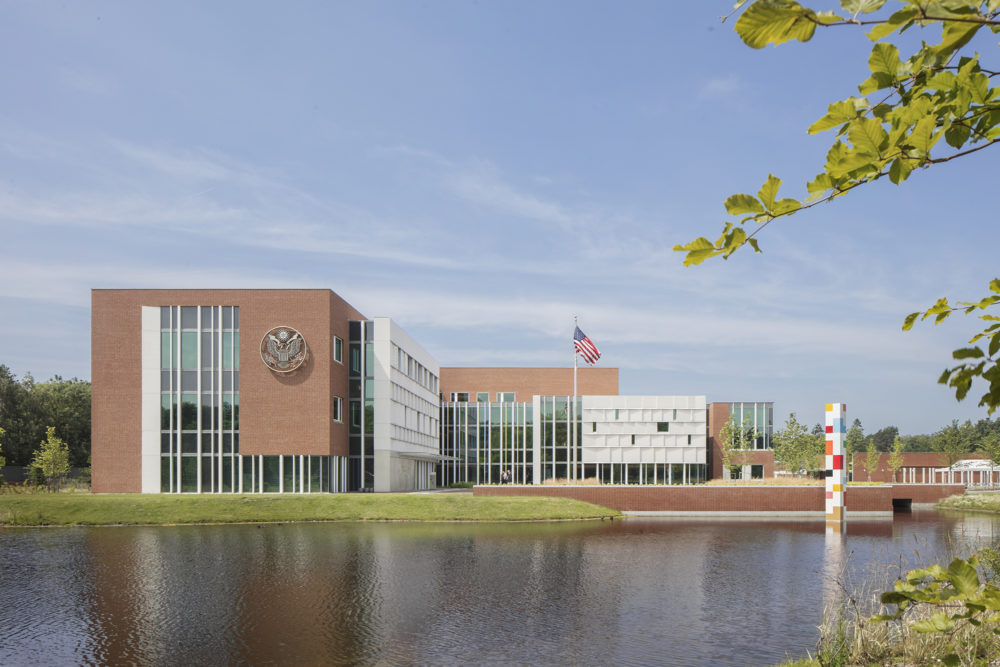
美国驻荷兰大使馆:景观设计
荷兰海牙
 Sasaki
Sasaki
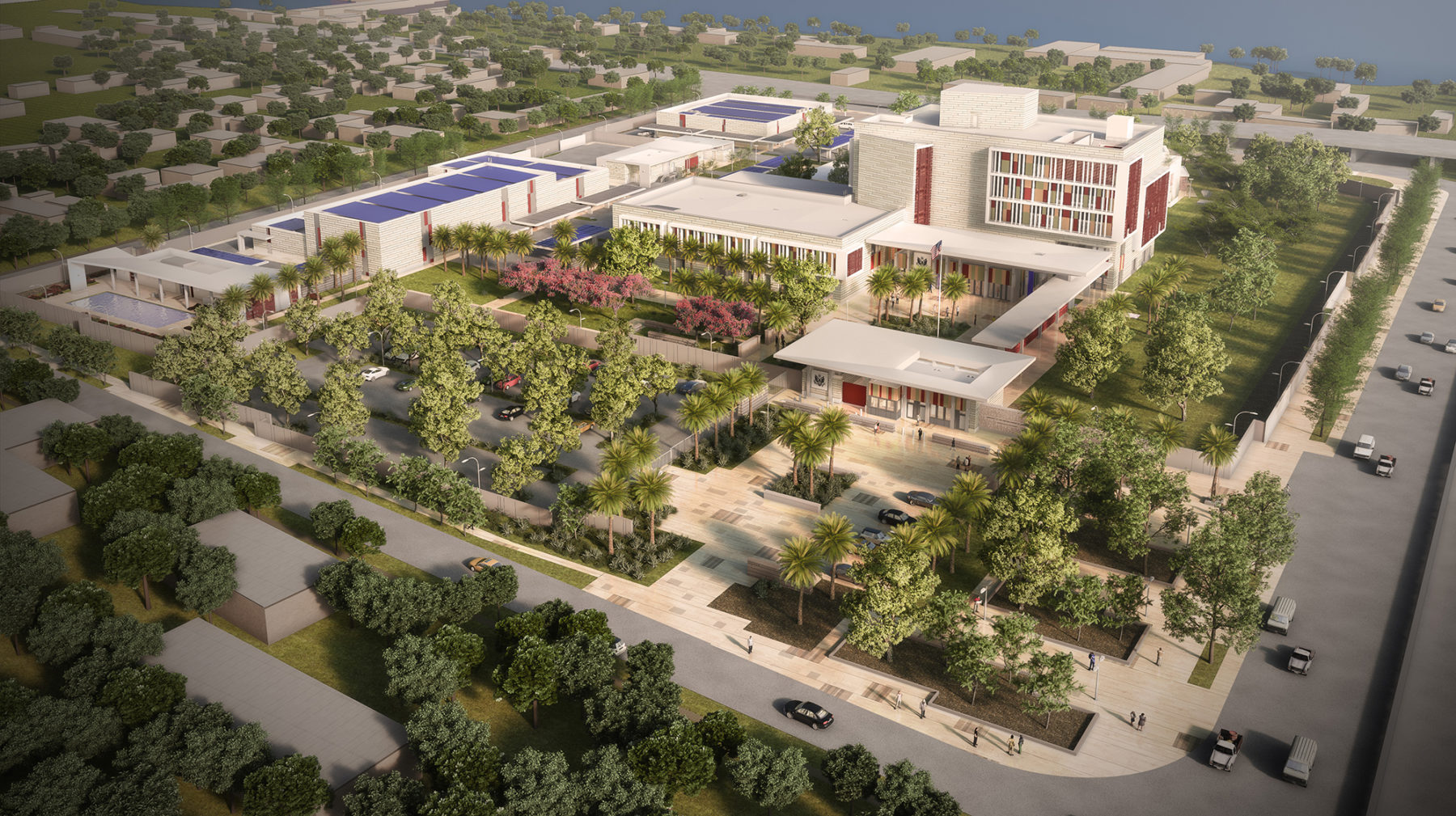
位于非洲乍得首都恩贾梅纳的美国大使馆园区占地逾五公顷,毗邻沙里河(Chari River)的新园区涵盖主办公楼、海军陆战队卫兵营房、一栋体现本地建筑风格的“卡巴纳”(Cabana)和四栋后勤建筑。基地按不同区域划分,服务及后勤设施独立布置,在东侧形成缓冲带,基地其余三分之二的面积是各主要建筑物的所在地,这里以薩赫勒地带(Sahel)的特性为蓝本实行可持续的景观设计。由主办公楼和营房围绕的“绿洲”为使馆人员带来近在咫尺的休闲花园,大片树荫、绿景和水景不仅提供优美景致,更以柔和的方式将毗邻城市空间区隔开来。
建筑外立面是铺有雨屏覆板的混凝土结构,雨屏覆板为镶嵌在金属下部结构的薄壁纤维混凝土。项目刻意采用为数不多的建筑材料种类,旨在创造一种庄谐并重的美感,利用现成、实效的运送和组装系统,也便利于施工过程。墙板的颜色和表面纹理展现细腻造工之余,也呈现一致的尺度感。独立遮蓬和屋檐在一个个建筑体和四周的景观空间之间发挥缓和作用,大厅和咖啡厅的屋檐更设计成利于采集雨水,雨水沿屋檐倾泻而出,灌溉下方的雨水花园。一系列垂直和水平日光控制装置不仅为建筑物增添个性,也使室内免受阳光直射,减少太阳辐射热量。
项目的建筑类型及选址都对设计团队构成不少挑战,然而从目标定立到实际执行,项目真正实践了可持续发展,具备迎合未来发展的灵活性以及耐久而运营成本低廉的整合系统,至于面对位置偏远、技术劳动力短缺的客观因素,方案也提出经济可行的施工策略,例如光伏电池板的应用、巧妙设计的屋檐,加上能够进行现场发电的中央公用服务大楼,就使馆园区无需依赖公共电网。其他可持续发展亮点措施包括地下热交换系统、废水回用和人工湿地。
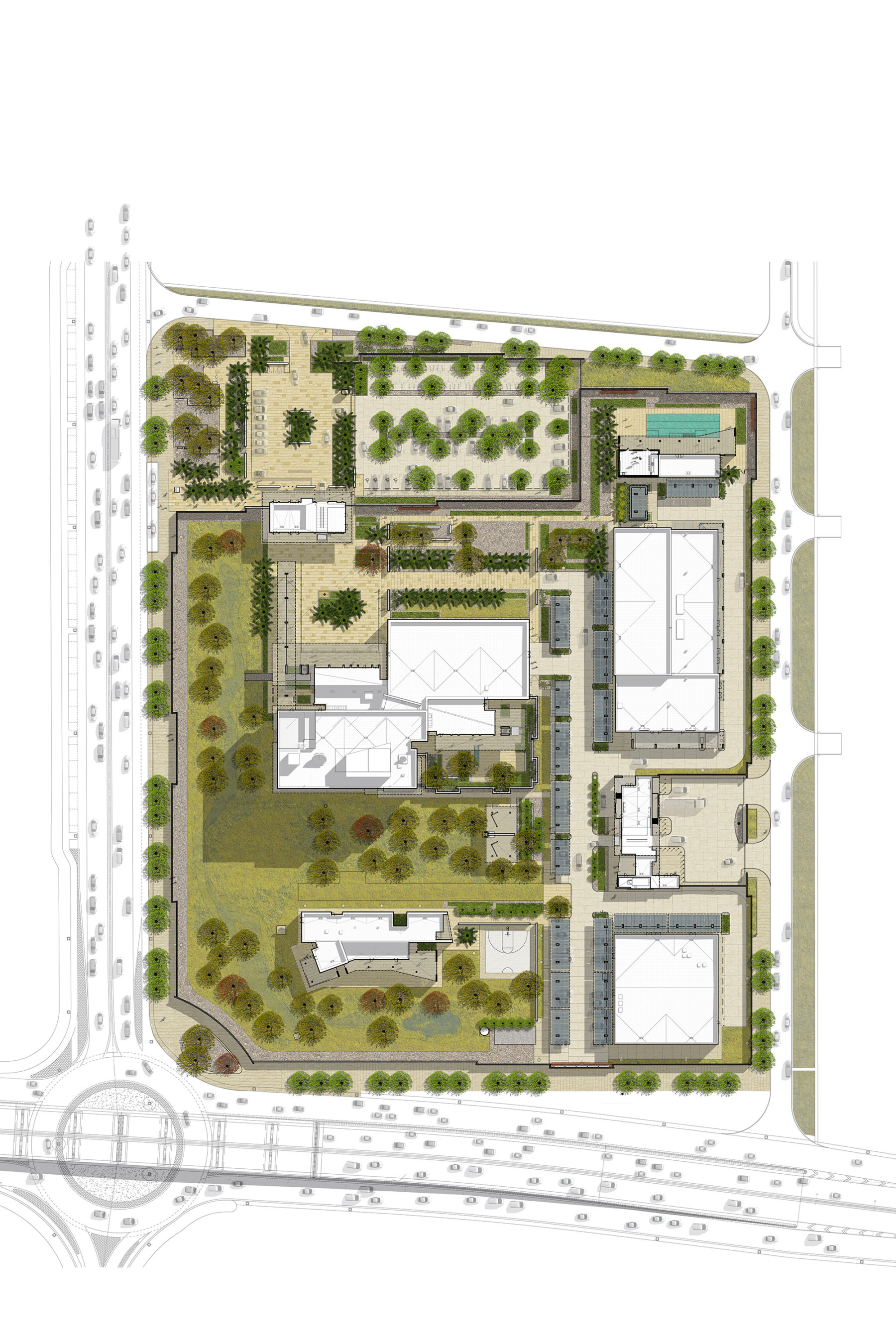
Site Plan
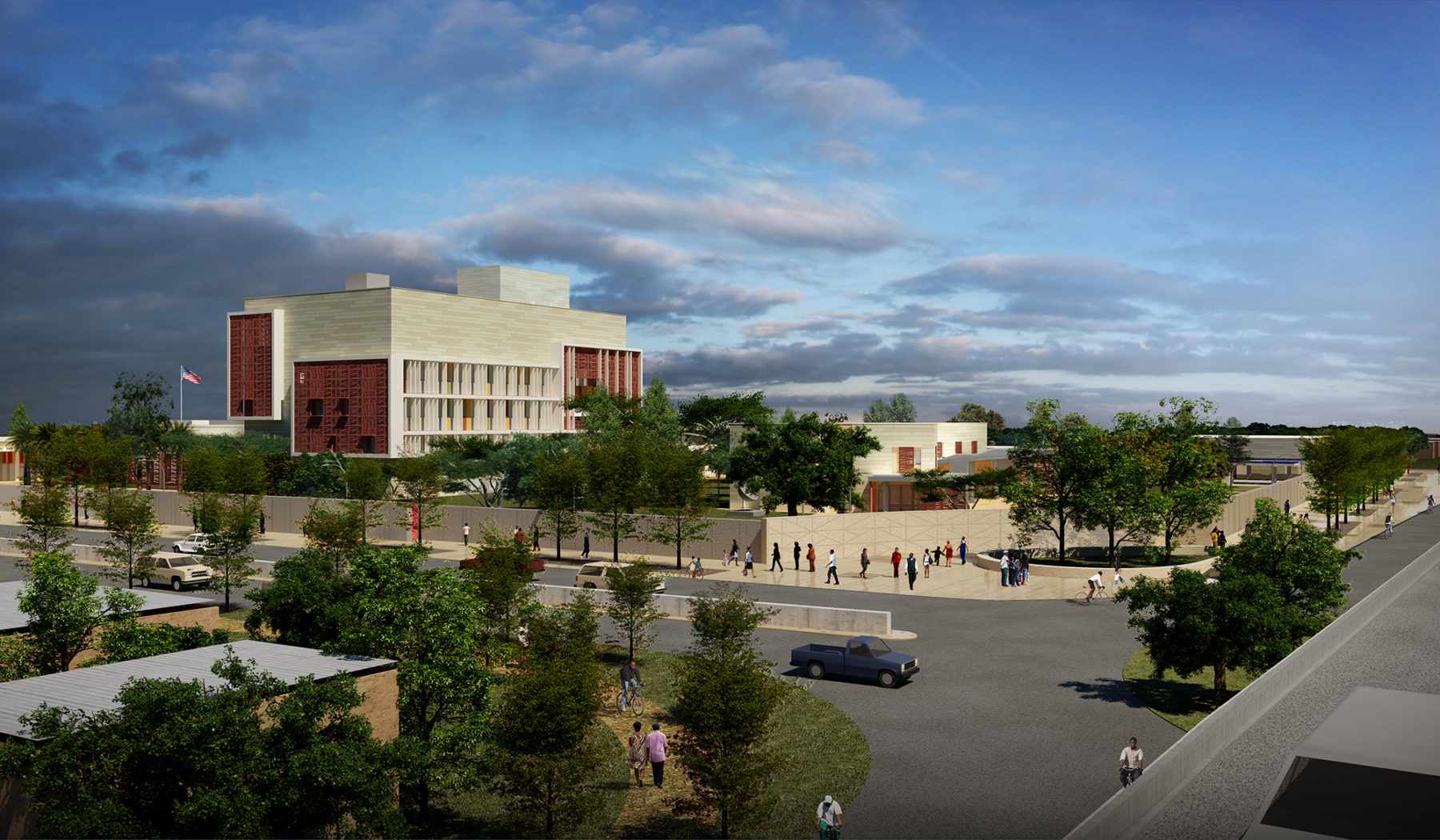
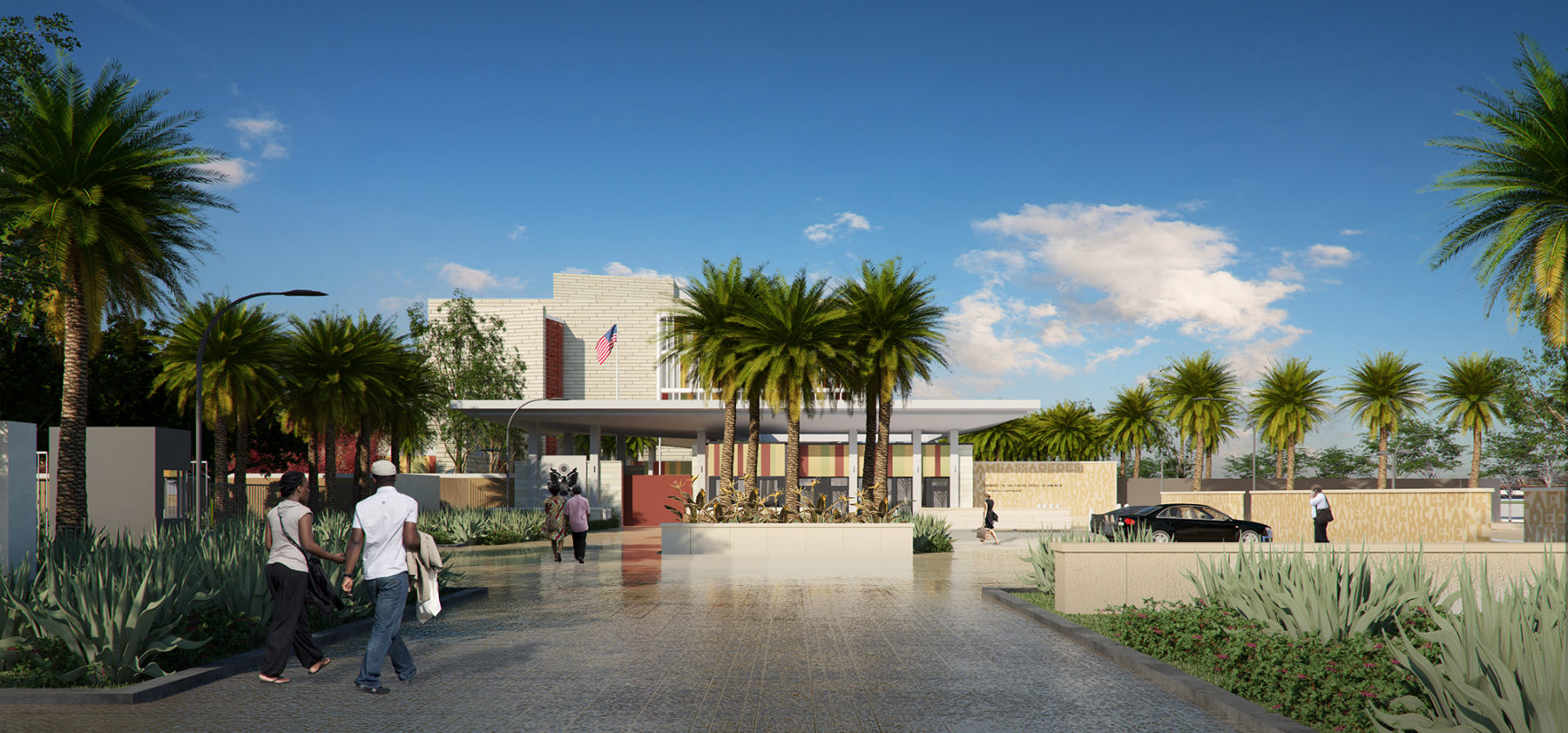
Exterior architectural walls are a concrete construction with an outer layer of rainscreen paneling. The paneling is composed of thin-walled fibrous concrete mounted to a metal substructure. The limited material palette is intended to create a dignified and calm aesthetic, using a readily available, pragmatic system for shipping and assembly. Colors and surface textures of the panels provide scale and detail. The network of free-standing and building-mounted canopies mediate between building mass and surrounding landscape spaces. Canopies over the Lobby and Café are configured to collect rainwater to spill into rain gardens below. An architecturally expressive layer of horizontal and vertical sun controls will protect the interiors from direct sunlight and heat gain.
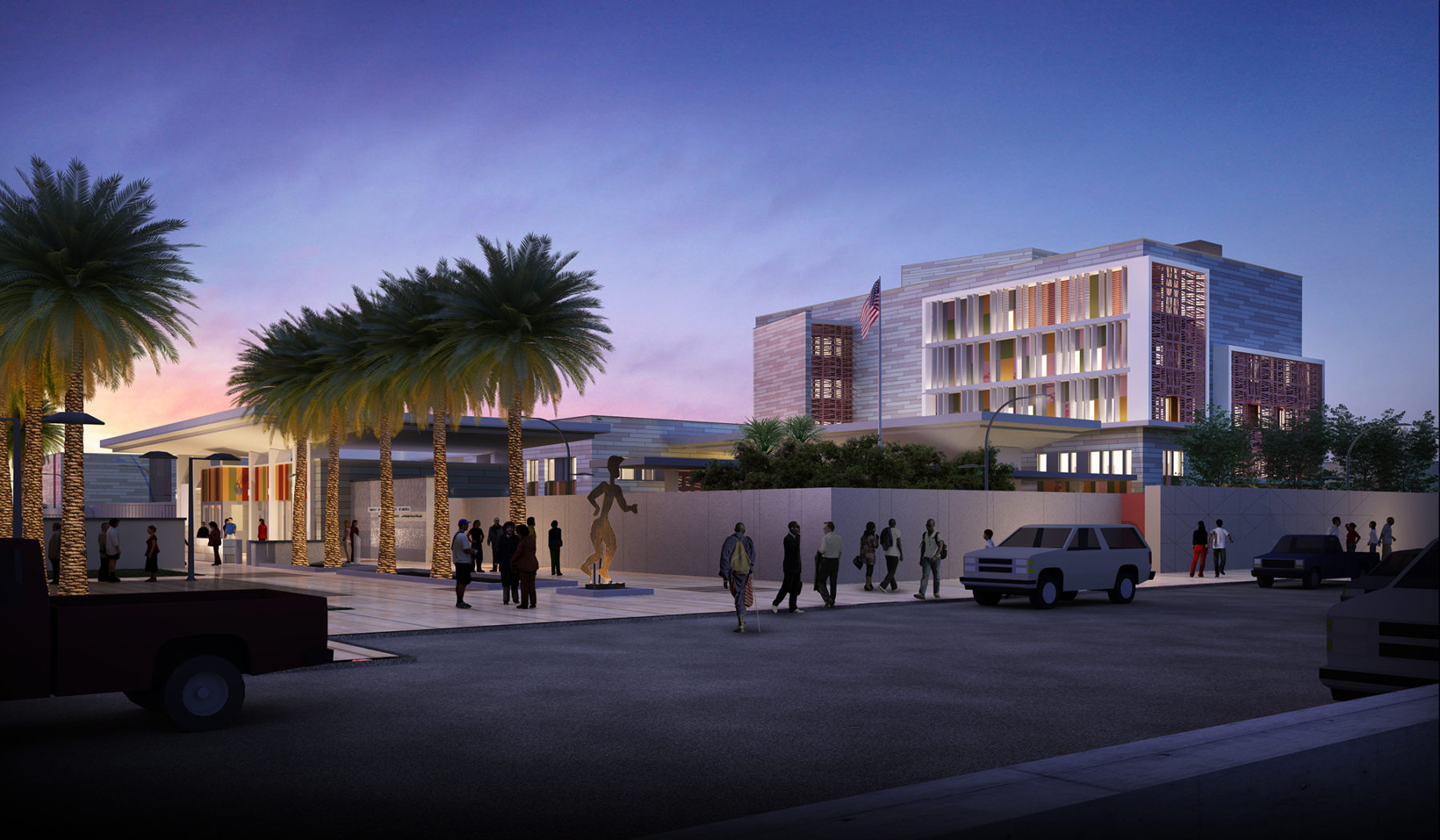
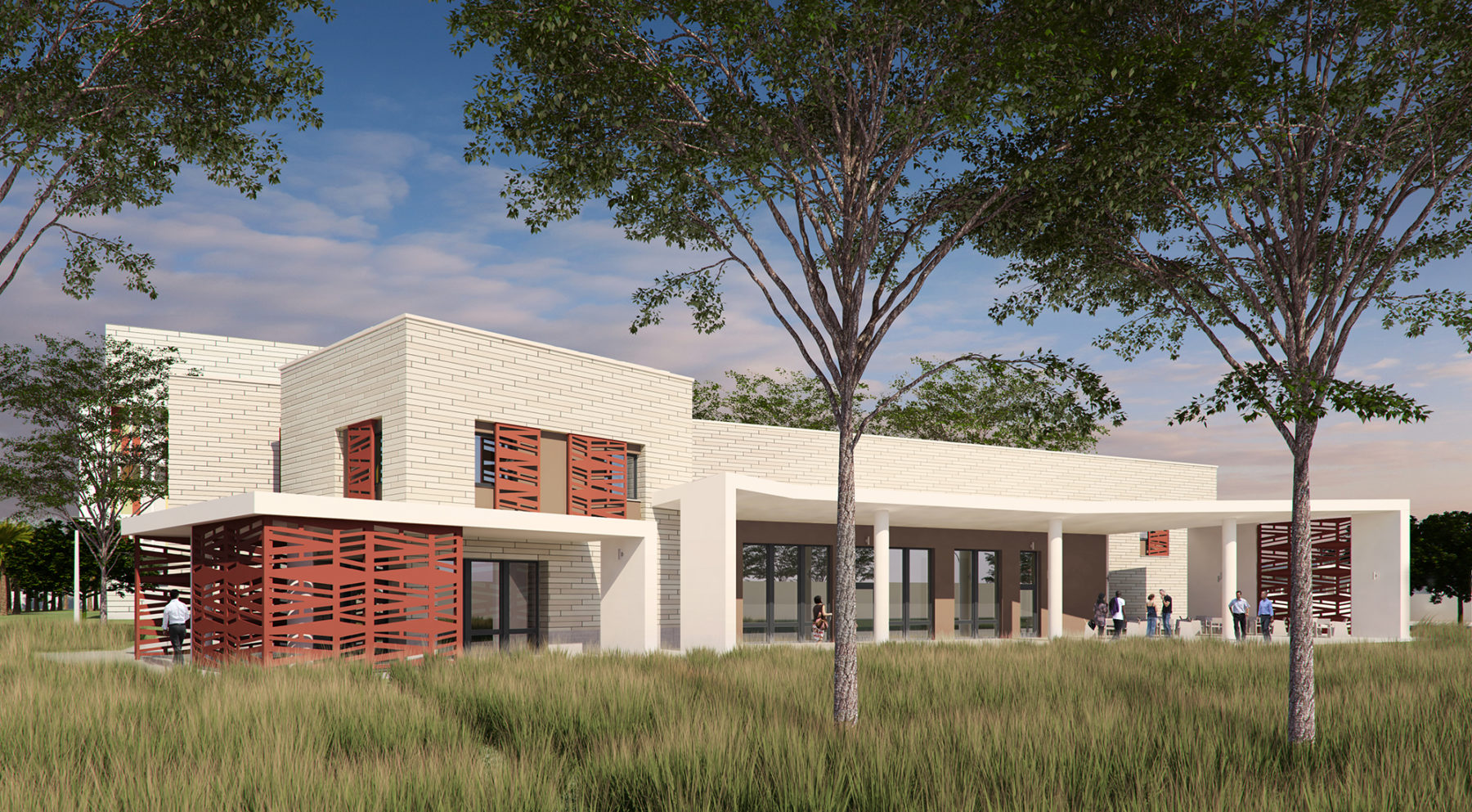
Both the project type and location pose various design challenges. However, the design evolved from goals to develop a sustainable project with future flexibility, durable integrated systems and low operating costs, and provide economic approaches to construction in a remote region where skilled labor is in short supply. With photovoltaic panels on building and canopy roofs and a central utility building providing full on-site power generation, the campus is “off the grid”. Other sustainable initiatives include earth tubes, wastewater effluent reuse, and constructed wetlands.
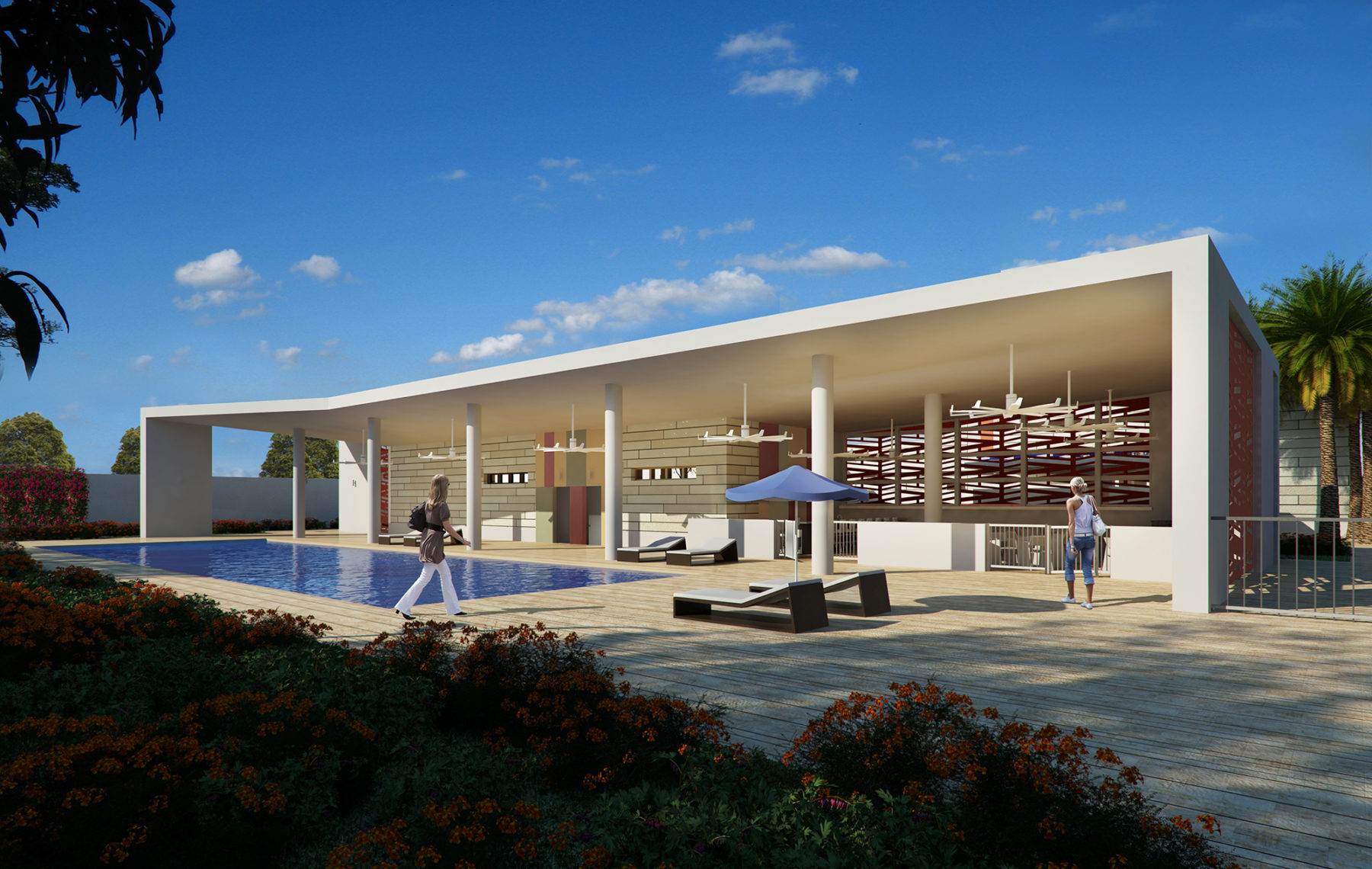
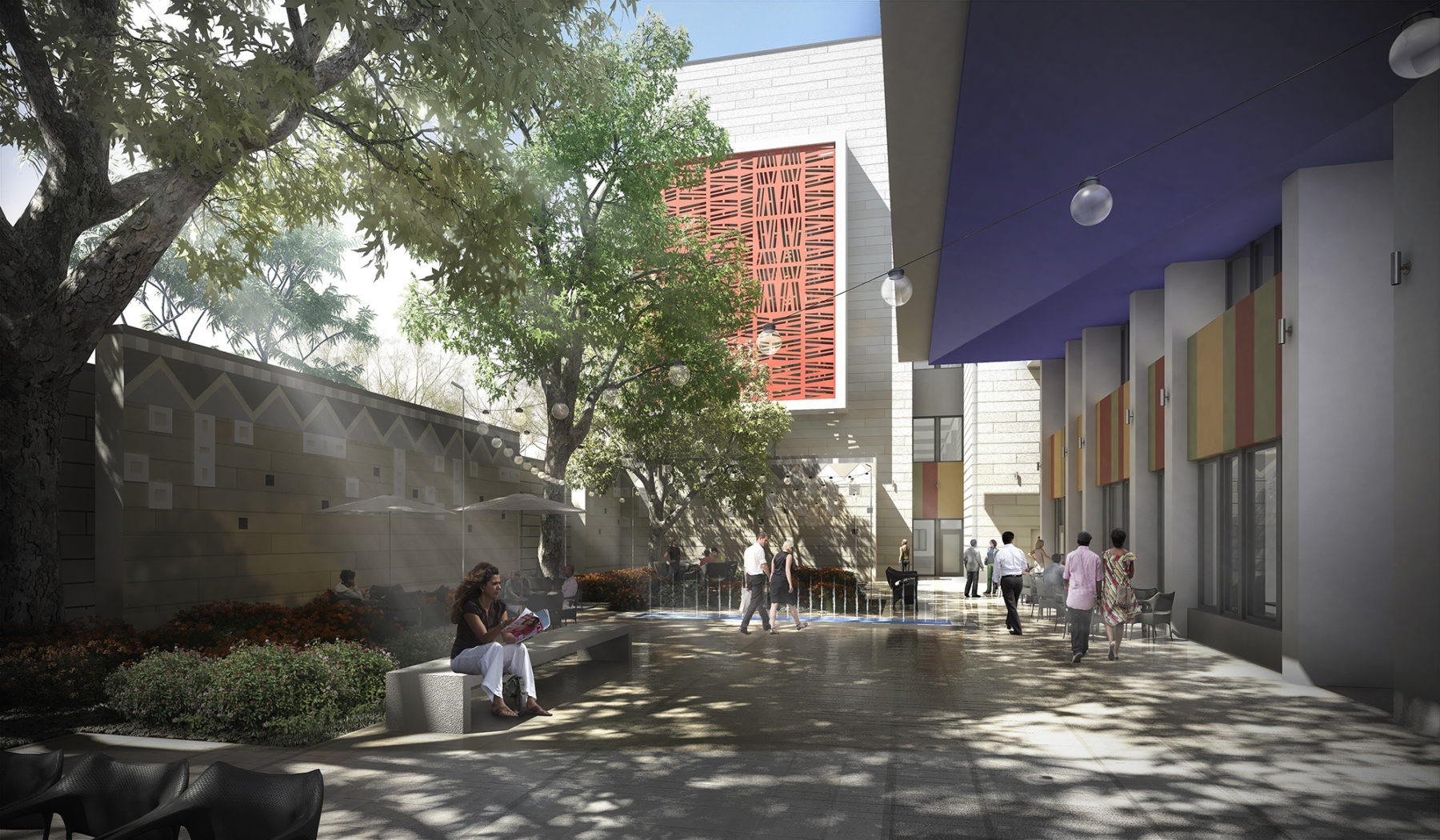
想了解更多项目细节,请联系 Alan Ward或Steve Walz.